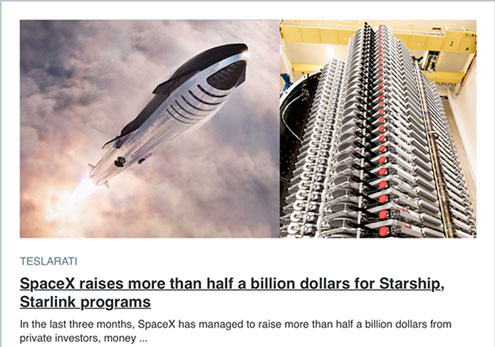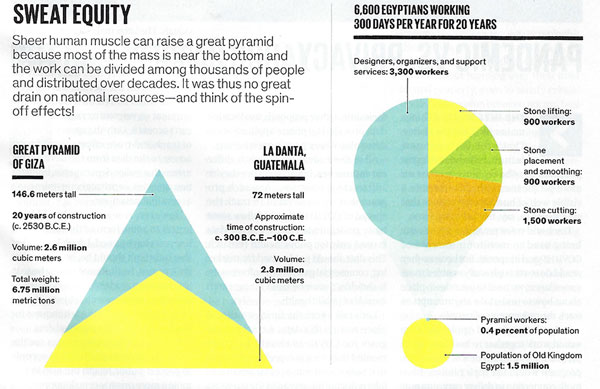Well we were out early this morning (4:06 am) to see if the latest batch of Starlinks was going to be visible, but those darn high, thin clouds got in the way, so we have to wait for another day, but today we can still report on other SpaceX and physics news.
This photo image from SapceX shows the recent Falcon 9 launch with the rockets exhaust and its beautiful reflection in the water. Beautiful, thanks for that photo, SpaceX!
 |
| Beautiful view of Falcon 9 launch from KSC (Source: SpaceX) |
In recent posts in this blog we have commented about how many people, including this Resident Astronomer, have traveled to Boca Chica launch facility to peer through the fence and wonder about all the activity going on there for Starship fabrication and testing. We rely a lot on volunteer Mary, @BocaChicaGal, observers who are there more often, and now we see that some adventurous observer has taken to photographing the site from an airplane. Thanks for that @RGVerialPhotos!
 |
| Aerial view of more nosecones for next serial numbers of Starships (Source: @RGVaerialphotos) |
You might have wondered how SpaceX gets its funding to be on a very fast development track for Starship. Well, SpaceX does do a lot of funded rocket launches, just think of the recent successful manned Dragon spaceship to the ISS. It turns out that there are many private investors that see big potential by investing in SpaceX and willingly look forward to the future. SpaceX shares are not publicly traded, but if you want you can buy shares of Google parent, Alphabet, who owns about 8% of SpaceX.
 |
| SpaceX has raised over half a billion dollars in three months (Source: Teslarati) |
Another thing you can do while staying mostly at home, although we now see that with proper social distancing we can get out more, but just in case you can continue to listen to a wide range of videos and podcasts. Consider Caltech physicist, Sean Carroll, who just published his 100th podcast. As a physicist wannabe, I probably have listened to and enjoyed most of them. Check it out if you haven't already got hooked. Thanks for all of those, Sean!
 |
| Hooray, Sean Carroll completes his 100th podcast (Source: www.preposterousuniverse.com) |
After considering Sean's view on the meaning of life, we can continue on with videos from Sabine Hossenfelder and how the concept of beauty in physics has in the past been such a successful guide to developing new physic, but now seems to have stalled out and not much has come from that line of thinking in the last 40 years. If you want to get into some of the details, check out her book "Lost in the Math."
 |
| Searching for beautiful equations worked for 40 years (Source: Sabine Hossenfelder, "Lost in Math") |
So we all like beauty and trying to learn the math is a lot of hard work. I'm just trying to understand the the math. We can see though just by scanning the Sunday morning paper that physicist wannabes come in all shapes and sizes. The first equation seems to be the solution for a triangle or for the metric in differential geometry and the second equation is for time dilation, but wow, where is this stuff heading? Yes, I agree, there can be a bit of a depressing recognition of how hard it can be!
 |
| Physicist wannabes come in all shapes and sizes (Source: OCA Register, Mike Peters) |
Ok, enough depression, let's consider a more interesting application of math. Vaclav Smil is a prolific writer and I have many of his books on the nature of energy. Here he considers the construction of the pyramids from the standpoint of how much potential energy is stored in a pyramid and how all of that energy was delivered by human beings. Remember that the potential energy of a pyramid is how much energy is required to lift all of the blocks above ground level. He uses the size of the pyramid and the volume and mass of the blocks to carry out the calculation. He calculates that the potential energy needed to move the blocks in position against the gravitational field is 2.4 trillion joules. He then goes on to use estimates of how much human muscle energy would be needed to lift all of those blocks. He then estimates the number of people needed. He notes that all of the labor could have been done at other times than the harvest seasons, when most of the labor would be busy. Pretty neat!
As a side question, for me, I wondered about how much human energy had to be expended to bring the blocks to Giza from the quarries at Aswan, which is about 700 miles away? He did not go into that. Dragging or rolling huge blocks across sand would have taken a lot of energy. At least, I guess much of the transport could have relied on water flow on the Nile to float the blocks downstream to Giza. Anyway thanks for that discussion, Vaclav Smil!
 |
| How much potential energy goes into a pyramid (Source: Vaclav Smil, IEEE Spectrum, 6/20) |
In other online activities and meetings we see that our local Orange County Astronomers (OCA) has successfully made a transition from live in person meetings to online meetings. This month's meeting was an especially interesting discussion of dust in the universe with Professor Karin Sandstrom. Thanks to everyone who brought this meeting to fruition!
 |
| Learning about interstellar dust at monthly OCA meeting (Source: Karin Sandstrom, UCSD) |
Another local astronomy event that has also made the transition to online is the annual Society for Astronomical Science symposium, which normally would have been held in Ontario, CA. Anyway, this event has presentations from amateur astronomers who are really doing some detailed and fascinating work that can support the professional astronomical community. I haven't been able to attend all of the online sessions, but each has been interesting. There will be a couple more sessions next weekend if you got behind. Thanks to former OCA Secretary Bob, and others for continuing in this SAS tradition, now for the 39th annual symposium!
 |
| The 39th SAS Symposium is now online (Source: http://www.socastrosci.org/) |
If your interest in things in the sky go to more far reaching heights, be sure to check out the next MUFON Symposium. I have attended a previous symposium and they do have some interesting speakers. This year they project that the event will be held live in Las Vegas, September 25-27. This brochure was the first time I had heard the more refined term used in lieu of UFO, which is Unidentified Aerial Phenomena (UAP). Ok, put that on your calendar (or not)
 |
| Get the latest MUFON news and have fun in Las Vegas too! (Source: https://mufonsymposium.com/) |
Finally, after all of this news, we got some good advice from a friendly shopper in the grocery store parking lot. Yep, you can only study UAPs and physics and math and wait for visible Starlinks so much and then it is time for wine! Thanks to our masked, happy and friendly shopper!
 |
| Who says you can't learn anything in a parking lot? (Source: Palmia Observatory) |
Until next time, here from our burrow, stay safe, but it's time to recover more of our freedom,
Resident Astronomer George
Be sure to check out over 400 other blog posts on similar topics
If you are interested in things astronomical or in astrophysics and cosmology
Check out this blog at www.palmiaobservatory.com

No comments:
Post a Comment